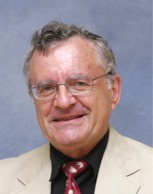Innovation Blog
Can Countries Innovate? Case Study: Singapore’s Aerospace Industry
By Shlomo Maital
A brief study by Ron Matthews and Nellie Zhang, of Nanyang Technological University, reveals how Singapore’s rather secretive aerospace industry has become one of the global leaders.[1] What can other countries learn from Singapore’s success? Here are the key success factors, according to the authors:
* ST Aerospace, established in 1975, just a decade after Singapore’s independence (in 1965). The company began with maintenance contracts, building on Singapore’s hub airport, and grew rapidly to employing 19,000 workers. Together with Japan and South Korea, ST Aerospace is regarded as one of Asia’s top three players. It is, among other things, the world’s biggest third-party airframe MRO provider (maintenance, repair, overhaul).
* Avoid Making Complete Aircraft: ST Group avoids making complete aircraft, but instead targets high value services associated with MRO, modification, upgrade and technology insertion. ST has identified high-margin areas in the aerospace value chain and staked its claim there.
* Focus, focus: ST Aerospace is part of ST Engineering, and enjoys synergies with sister business units: Electronics, Kinetics, Marine. ST Aerospace leverages high quality engineering services available in the other divisions, focusing in particular ‘dual-use’ (civil-military) interfaces.
* Government leadership: Governments can and do pick winners, especially in Singapore. Among other things, the government transformed an old WWII air base, Seletar, into an aerospace center.
* Become part of the global aerospace ecosystem: Singapore has positioned itself to become a highly desirable site to locate production of aerospace products, building contracts as OEM. Rolls Royce, for instance, will build its first Asian facility at Seletar, where it will build engines for the 787 Dreamliner and A350 aircraft.
“The most important contributory factor, in promoting and sustaining Singapore’s aerospace competitiveness,’ note the authors, “is the island-state’s interventionist government strategy…through the pro-active …Economic Development Board.” Not every nation can follow the Singapore model. But the old assumption that governments cannot, should not, do not, pick winners, is clearly false, at least in come cases.
[1] Singapore’s Aerospace Development ‘Model’. Feb. 1, 2010.


Leave a comment
Comments feed for this article